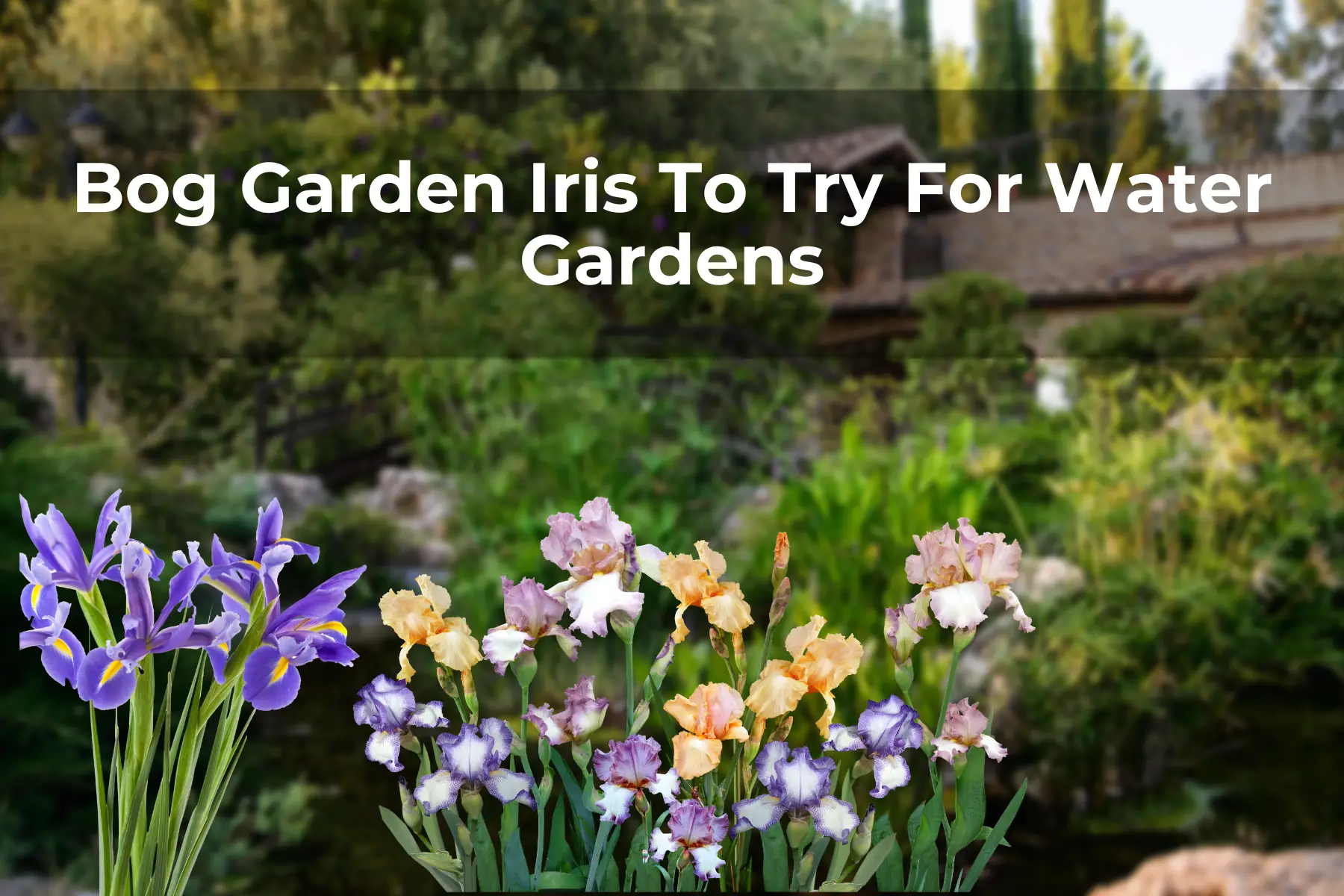Last Updated on April 15, 2024 by Real Men Sow
The most common bog plant for water gardens is the bog garden Iris. With their beautiful foliage and variety of flowers, they make a stunning backdrop for any pond. They are also part of the natural ecosystem in a water garden, acting as natural filters for the surrounding areas.
Some Irises, like the Louisiana Iris, can be planted in either wet soil or individual containers. They should be planted in shallow water, just a few inches below the surface like other bog plants. Irises other than the Iris pseudacorus should be grown in a container and then transplanted to the soil. Be sure to find out the requirements of the Iris that you want to plant in your water garden. Irises can be kept in check by being cut back every other year to prevent decaying leaves from building up.
How to Grow Bog Garden Iris
Plant them in fall in pond baskets that are larger than their height and up to 6 inches deep (15 cm). The roots of the water iris can spread but remain within the basket. Roots that are not contained in the pond basket may spread out like a wild, making it difficult to cut them back or puncture a liner. If a liner is not provided, water irises may be grown in a goldfish pond. They can be planted directly out of the water and into the sandy loam banks. Some species can tolerate dry periods but prefer moist to wet soil all year. These plants should be placed in locations that receive at least half or full sun.
How to Divide Bog Garden Iris
New growth may be possible in warmer climates in November, but it is more common for growth to begin in spring. Iris plants will flower in spring and then continue to grow through the summer. The growth rate will be slower in the summer heat and some shoots may die back. After the autumn flowering, it is best to propagate and divide iris plants. It depends on your zone of hardiness. This can happen at different times. It is possible to have multiple blooms in spring and autumn in warmer climates.
- Take out the iris and pond plant basket.
- To see the root structure better, wash the root clumps.
- You can separate the leaves into groups and then pull apart the iris (a few leaves that are attached to a small root cluster).
- You can remove most of the roots with a knife, leaving just a few inches.
- Reduce the height of the foliage to approximately four inches.
- Replant each individual plant in a pond basket.
- Add water, then top it with gravel and place it in the margins.
The collection of seeds can also help water irises to grow. Iris seeds should be collected as soon as the flowers have finished flowering. The seeds should also be sowed immediately. Sow the seeds in a small container or aquarium that has a layer of moist heavy loam aquatic potting mix. The potting mix should also be used to cover the iris seeds. The seeds should begin to sprout within three to 4 weeks. Then, you can transplant established seedlings into larger pond plant baskets.
Diseases and Pests Control
Irises can be affected by rust, leaf miners, and borers as well as sunscald and cutworms. If they are planted above water, moles may also be a problem. To treat most of these, remove any dead or dying leaves and apply a pond-safe insecticide. Rust is a fungus that starts in the soil. The best way to break the cycle is to remove infected leaves. Sunscald occurs when the rhizomes become exposed to the sun. To protect them, add a layer or mulch. A fertilizer containing insecticides can be used to get rid of cutworms.
Bog Garden Iris Varieties To Grow
- Iris Brevicaulis (Zigzag Iris) – Considered hardy, It grows best under full sun to part shade and in medium to wet, humus-rich, slightly acidic, well-drained soils.
- Iris Missouriensis (Rocky Mountain Iris) – A quite hardy Iris that grows best under full sun and in medium to wet, fertile, slightly acidic, well-drained soils
- Iris Prismatica (Slender Blue Iris) – A rhizomatous perennial that grows best under full sun or part shade in acidic moist to wet soil.
- Iris Setosa (Brittle-Pointed Iris) – A rhizomatous perennial that grows best under full sun or part shade in wet to mesic, neutral to slightly acidic soil.
- Iris Ensata (Japanese Iris) – One of the most elegant Iris varieties that grows best under full sun or part shade in humus-rich, medium to wet, acidic soils.
- Iris Sibirica (Siberian Iris) – A herbaceous perennial that grows best under full sun or part shade in average, medium to wet soils


